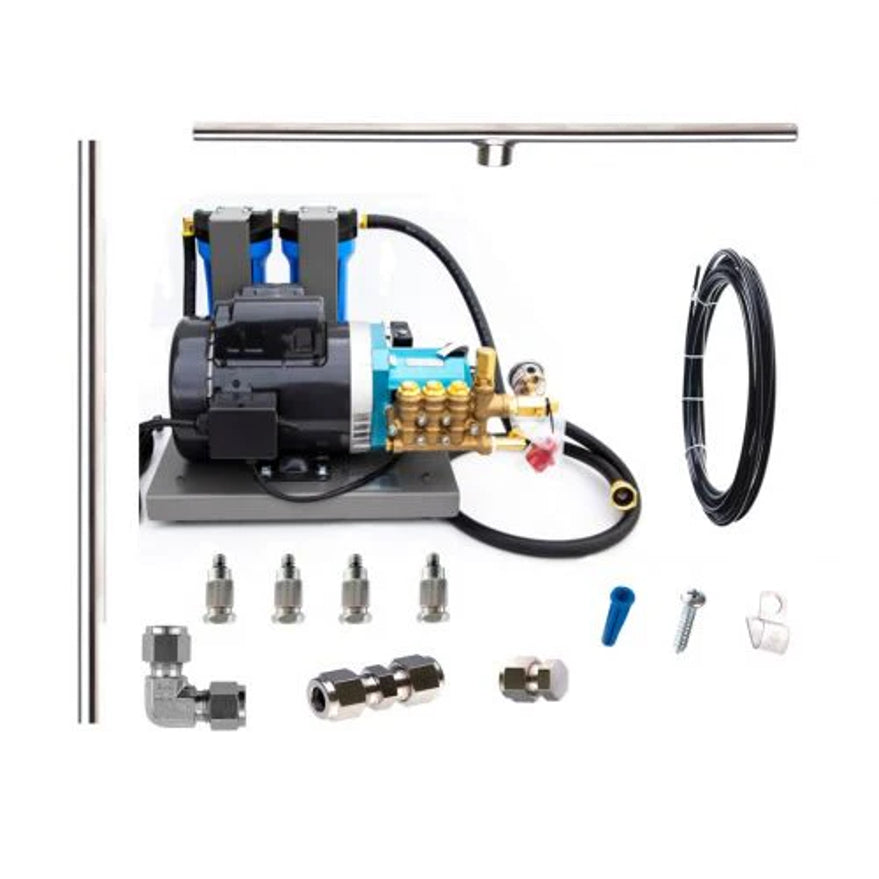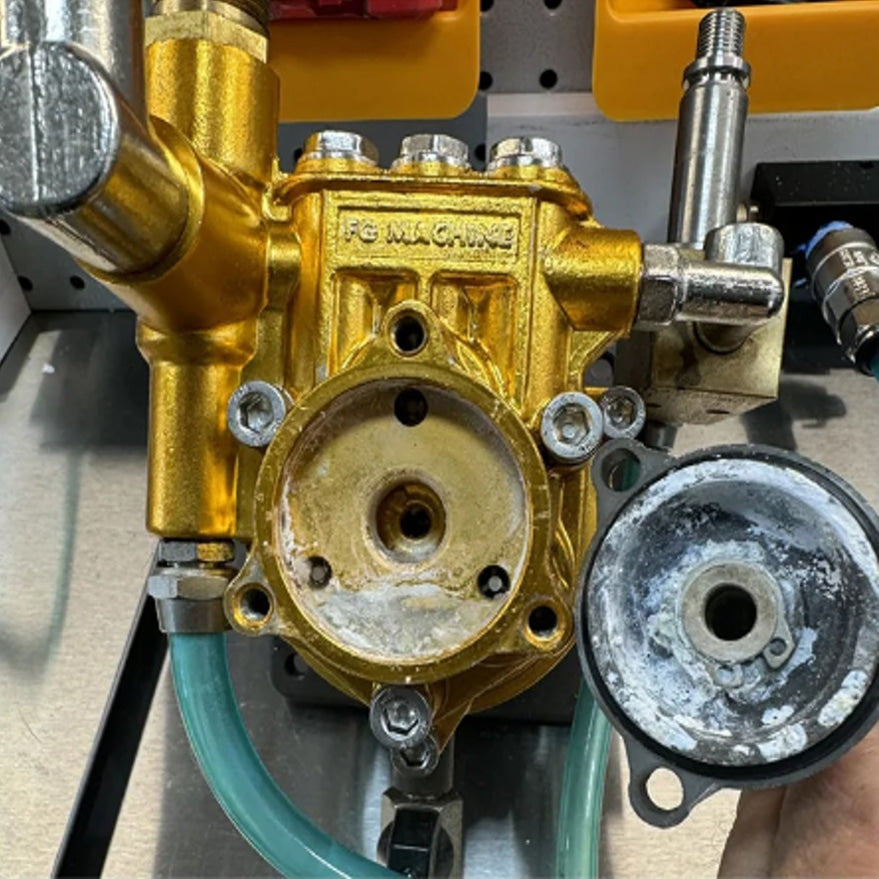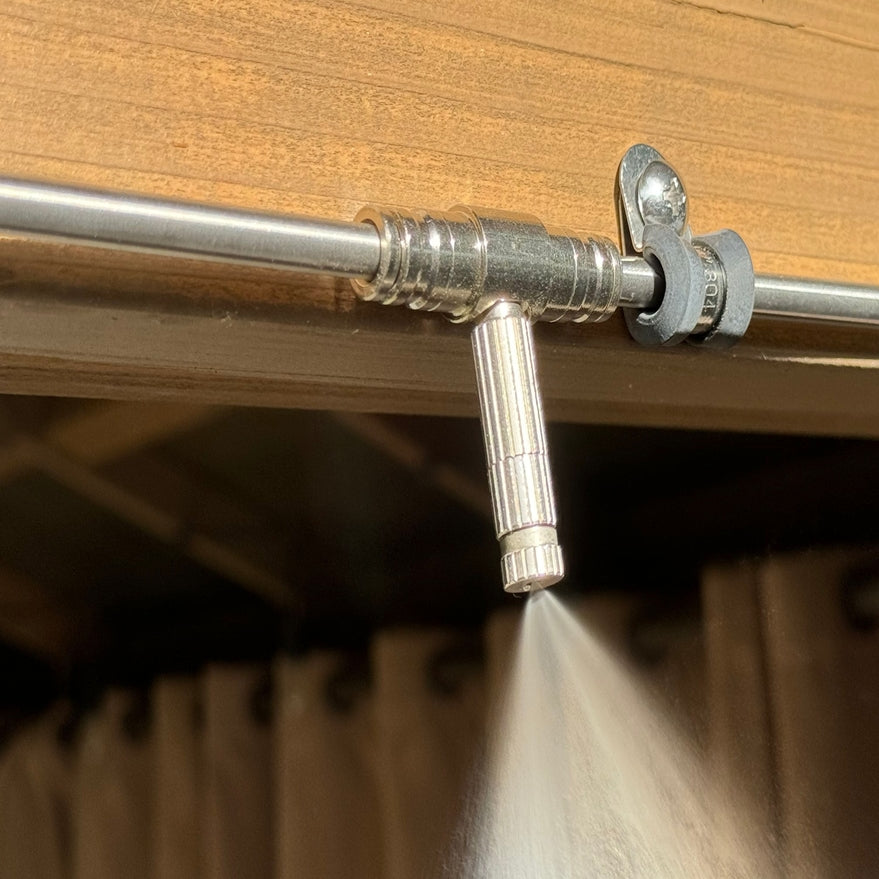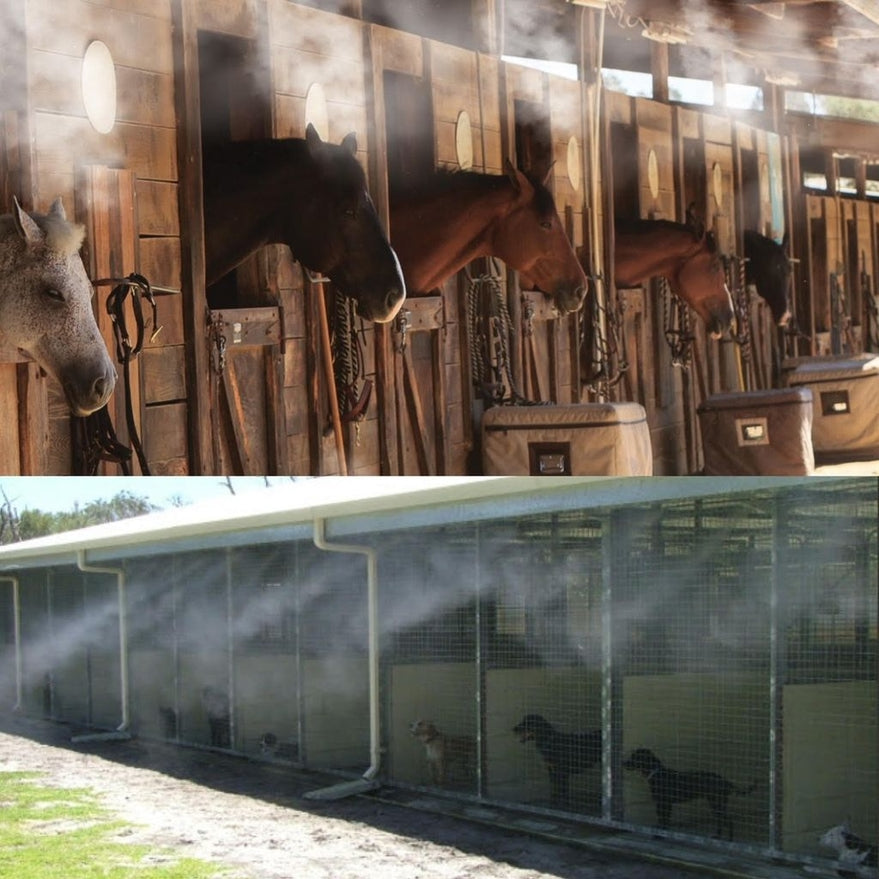📌 Key Takeaways
The System Selection Framework Changes Everything: Your choice between perimeter misting and misting fans isn't about cooling capacity—it's about matching your venue's structural reality to guest flow patterns. The four-step decision tree (structure assessment, space usage evaluation, coverage needs, and operational priorities) eliminates guesswork and prevents costly mismatches between system type and venue requirements.
Evaporation Enhancement Beats Raw Coverage: Misting fans don't just move air—they accelerate mist evaporation through targeted air circulation, often achieving superior cooling efficiency per gallon of water used. This dual-action approach debunks the common misconception that fan-based systems are less effective than perimeter installations.
Hybrid Approaches Maximize Revenue Potential: Large venues can layer both systems strategically—perimeter misting for consistent main dining area coverage, with targeted fans addressing flexible seating zones and hot spots. This approach maintains full seating capacity during peak heat periods instead of losing tables to uncomfortable conditions.
Installation Reality Drives Long-Term Success:Perimeter systems demand continuous overhead structures at 8-10 feet with multiple mounting points, while misting fans require electrical access for each unit. Understanding these infrastructure requirements upfront prevents mid-project surprises and ensures your chosen atmosphere control system integrates seamlessly with existing operations.
This comprehensive comparison framework arms venue owners with the specific criteria needed to make confident system selections that protect both guest comfort and profitability during extreme heat periods.
When Every Degree Counts: Understanding Your Atmosphere Control System Options
The lunch rush is in full swing. Your patio is packed, but the temperature just hit 95°F.
You watch potential customers walk past your outdoor seating, heading straight for the air-conditioned competition next door. Each empty table represents lost revenue—and the problem only gets worse as summer intensifies.
Here's what most venue owners get wrong:they assume all commercial misting solutions work the same way. The reality? Your choice between perimeter misting and misting fans can make the difference between a profitable outdoor season and watching your investment sit empty during the hottest months.
The decision isn't just about cooling—it's about creating the right atmosphere control system that matches your venue's specific layout, guest flow patterns, and operational demands. Let's break down exactly how each approach works and when to choose one over the other.
Perimeter Misting Systems: The Traditional Approach
How Perimeter Systems Work
Perimetermisting creates a cooling boundary around your seating area. The system runs high-pressure water lines along the edges of your covered space—typically mounted at 8-10 feet on existing structures like pergolas, overhangs, or patio covers.
The key advantage? Coverage. When properly designed, perimeter systems create what industry professionals call a "mist curtain" that keeps hot air out while maintaining comfortable conditions inside the protected zone.
Ideal Applications for Perimeter Misting

This approach works best when your venue has well-defined outdoor boundaries. Think covered patios with solid perimeter structures, enclosed courtyards, or dining areas under permanent awnings.
The magic happens in spaces that already have architectural elements at the right height. Restaurants with existing pergolas or gazebos can often integrate perimeter misting without major structural modifications—which matters when you're balancing cooling needs against renovation budgets.
Advantages of Perimeter Layout
Perimeter systems excel at creating uniform cooling across large areas. Once installed, they require minimal daily management from your staff. The system runs automatically, maintaining consistent temperatures without requiring repositioning or frequent adjustments.
From an operational standpoint, perimeter misting keeps the cooling equipment out of your guests' line of sight. The nozzles blend into the existing architecture, maintaining the aesthetic appeal that draws customers to outdoor dining in the first place.
Limitations to Consider
The biggest constraint? Structural requirements. Perimeter systems need appropriate mounting points at the correct height around your entire seating area. Venues without existing overhead structures face significant installation costs.
Wind can also disrupt the effectiveness. On breezy days, the mist curtain may shift, leaving portions of your seating area without adequate cooling. This becomes particularly problematic for venues in consistently windy locations.
Misting Fans: The Targeted Solution
How Misting Fan Systems Operate
Misting fans combine two cooling principles: evaporative cooling from the mist and enhanced air circulation. The fan blades push air through and around the mist droplets, accelerating evaporation and creating more effective cooling per-water-gallon used.
This dual approach addresses a common misconception about fan-based systems. Rather than being less effective than perimeter systems, properly designed misting fans can actually enhance the evaporative cooling process by ensuring rapid mist evaporation before droplets reach guests or furniture.
Best Use Cases for Misting Fans
Misting fans shine in venues with flexible seating arrangements or spaces that lack suitable perimeter mounting options. They work particularly well for establishments that need to adapt their cooling coverage based on crowd size or seasonal layout changes.
Consider restaurants with open-air patios, rooftop bars, or venues that extend seating into adjacent areas during peak seasons. Mobility and focused cooling make misting fans ideal when you need to direct cooling precisely where customers are seated.
Benefits of Fan-Based Cooling

The primary advantage is targeted effectiveness. Instead of cooling an entire area, you can position fans to create comfort zones exactly where needed. This precision often translates to lower water usage while maintaining guest satisfaction.
Misting fans are more effective than perimeter misting systems in higher humidity locations because the added air behind the mist facilitates the evaporation.
Additional benefits of misting fans is that on days when misting is not needed, the customer can use the fans without the misting function which can provide refreshing air circulation and some moderate cooling.
Installation flexibility gives misting fans another edge. Most systems can be mounted on existing structures without extensive modifications, and portable units allow you to adjust coverage as your seating configuration changes throughout the day or season.
Potential Drawbacks
Power requirements present the main operational consideration. Each misting fan needs electrical connections, which can complicate installation in venues with limited outdoor electrical infrastructure. You'll also need to factor ongoing electricity costs into your operational budget.
Maintenance involves both the misting components and the fan mechanisms. While this isn't necessarily more complex than perimeter systems, it does require staff familiarity with both cooling and mechanical systems.
The System Selection Framework
Here's the decision tree that cuts through the complexity:
Step 1: Assess Your Structure
-
Do you have continuous overhead coverage at 8-10 feet around your seating perimeter?
-
If YES → Consider perimeter misting
-
If NO → Lean toward misting fans
Step 2: Evaluate Your Space Usage
-
Does your seating layout remain consistent throughout operating hours?
-
If YES → Perimeter systems offer efficiency advantages
-
If NO → Misting fans provide needed flexibility
Step 3: Consider Your Coverage Needs
-
Do you need uniform cooling across large, open areas?
-
If YES → Perimeter misting typically performs better
-
If NO → Targeted fan cooling may be more cost-effective
Step 4: Factor in Operational Priorities
-
Is minimizing daily staff involvement in cooling management important?
-
If YES → Perimeter systems require less daily attention
-
If NO → Fan systems offer more control and adaptability
This framework helps identify which approach aligns with your venue's operational reality—but remember that the best solution sometimes involves combining both approaches.
Hybrid Approaches: When to Combine Both Systems
Large venues often benefit from layered cooling strategies. A perimeter system might handle the primary seating area while strategically placed misting fans address specific hot spots or flexible seating zones.
This approach makes particular sense for establishments with both covered and uncovered outdoor areas. The perimeter system creates consistent comfort in the main dining space, while fans provide targeted relief in areas that extend beyond the perimeter coverage.
Consider the business case:hybrid systems allow you to maximize seating capacity during peak heat periods. Rather than losing tables to uncomfortable conditions, you maintain full revenue potential across your entire outdoor footprint.
Implementation Considerations for Each Approach
Structural Requirements and Installation Factors
Perimeter systems demand careful attention to mounting points and water line routing. Your existing structure needs to support both the water lines and mounting hardware at multiple points. Most installations require professional assessment to ensure adequate structural support.
Misting fans typically integrate more easily with existing infrastructure. Wall mounts work for most applications, and ceiling mounting provides coverage without consuming floor space. The key consideration becomes electrical access rather than structural load capacity.
Maintenance and Operational Differences
Both systems require regular nozzle cleaning and seasonal maintenance, but the patterns differ. Perimeter systems benefit from systematic, scheduled maintenance across all components simultaneously.
Fan-based systems allow for maintenance scheduling around individual units. If one fan requires service, the others continue operating—maintaining partial coverage while repairs proceed. This redundancy can be valuable during your busiest operating periods.
Cost Considerations Beyond Initial Investment
Water usage patterns vary between approaches. Perimeter systems typically use more total water but may achieve better cooling efficiency per gallon in ideal conditions. Fan systems often use less water overall while providing more targeted cooling.
Energy costs favor perimeter systems, which require only pump operation. Misting fans add electrical consumption for each fan motor, though modern systems are designed for efficiency. Factor these ongoing operational costs into your return on investment calculations.
The choice between perimeter misting and misting fans isn't about finding the "best" solution—it's about matching the right atmosphere control system to your venue's specific needs. Consider your structural reality, operational priorities, and guest experience goals.
Whether you choose perimeter coverage, targeted fan cooling, or a hybrid approach, the goal remains the same: transforming your outdoor space into a profitable, comfortable environment that keeps customers coming back even when the temperature soars.
Explore our complete selection of commercial misting solutions:
-
High-pressure misting system kits with everything you need
-
Commercial-grade pumps designed for continuous operation
-
Ceiling and wall-mounted misting fans for focused cooling
-
Professional installation accessories and filtration systems
Browse our website to discover how the right misting technology can protect your revenue stream while creating the comfortable outdoor environment your guests expect. Our team understands the unique challenges venue owners face, and we're here to help you make a confident investment in proven technology.
Questions about your specific needs? Call Jeff at Smart Mist USA:(916) 308-3856
Email: jeff@smartmistusa.com
This article provides general guidance on commercial misting system selection based on widely accepted industry practices. Specific system requirements, installation considerations, and performance outcomes may vary based on individual venue characteristics, local climate conditions, structural factors, and operational needs. This content is intended for informational purposes and should not replace professional consultation with qualified misting system specialists or contractors. Always consult with licensed professionals for system design, installation, and compliance with local building codes and regulations.
Our Editorial Process
Our content is developed through a rigorous research and review process designed to provide accurate, practical guidance for commercial venue operators. Our team analyzes industry best practices, established installation methodologies, and widely accepted performance principles to create actionable frameworks for business decision-making. All technical information is cross-referenced against industry standards, and our recommendations are based on commonly recognized approaches within the commercial misting industry. We regularly update our content to reflect evolving industry practices and emerging technologies that impact commercial outdoor cooling solutions.
About the Smart Mist USA Insights Team
The Smart Mist USA Insights Team combines decades of hands-on experience in commercial misting system design, installation, and optimization with deep expertise in hospitality and restaurant operations. Our team includes certified misting system specialists, commercial HVAC professionals, and business consultants who understand the unique challenges facing venue owners in creating profitable outdoor spaces. We focus on translating complex technical concepts into practical business guidance, helping restaurant and hospitality professionals make informed decisions about atmosphere control systems that directly impact their bottom line and guest satisfaction.

 Free Shipping On All Orders Over $50
Free Shipping On All Orders Over $50 (916) 308-3856
(916) 308-3856





